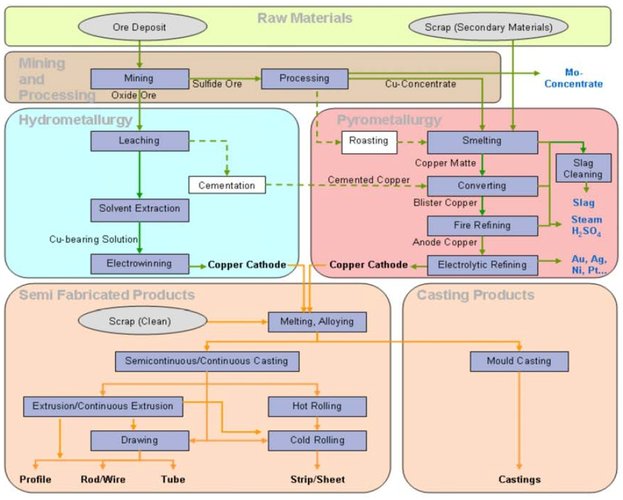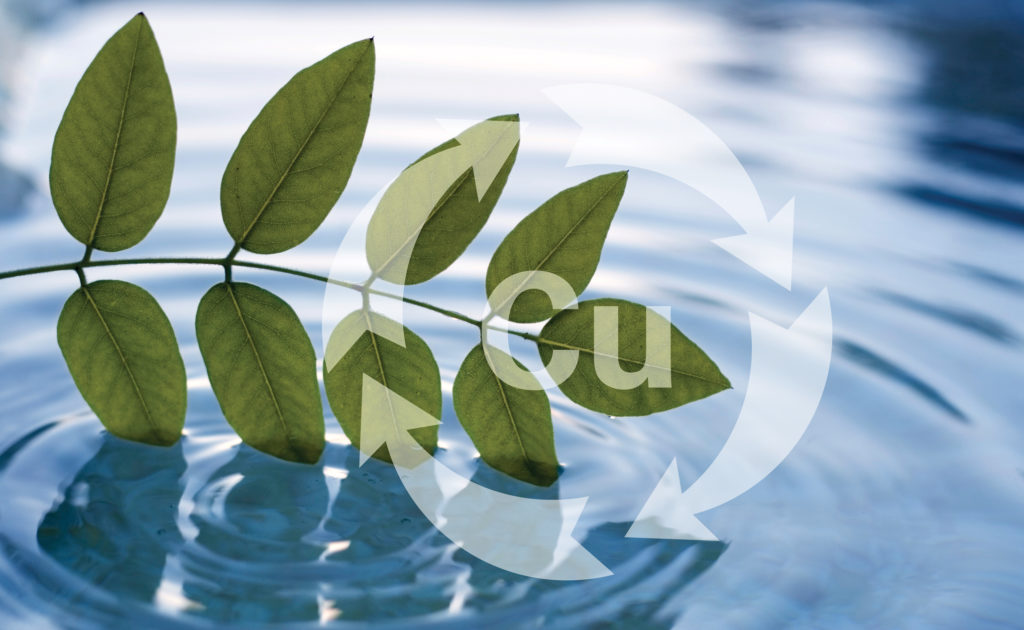
Terms and Definitions
Life Cycle Standards
All activities linked to Life Cycle are standardised in EN ISO 14040 ff. and its associated series of standards. The aim of these is to ensure that the underlying assumptions are fair, particularly when making comparisons with other studies or materials. Amongst other issues, a peer review of any results, before publication, is a prerequisite.
Life Cycle Inventory (LCI)
A Life Cycle Inventory analysis involves the compilation and quantification of inputs and outputs for a given product system throughout its life cycle (EN ISO 14040, 1997). This LCI have been compiled mainly from information obtained through industry questionnaires and site visits, with remaining gaps filled using literature data.
Life Cycle Assessment (LCA)
Life Cycle Assessment is defined as the compilation and evaluation of the inputs and outputs and the potential environmental impact of a given product system throughout its life cycle (EN ISO 14040, 1997). While this study does not include the use phase, it does include explanatory notes on how to use the data in an LCA context.
Impact Categories
An impact category is a class representing environmental issues of concern into which the LCA results may be assigned (EN ISO 14042, 1997).
The following six standard impact categories, often used in Life Cycle Assessments, have been quantified in this Life Cycle Inventory:
Use of Energy and Resources: Primary Energy (PE)
Climate Change: Global Warming Potential (GWP)
Acidification of Land and Water Resources: Acidification Potential (AP)
Eutrophication: Eutrophication Potential (EP)
Destruction of Ozone Layer: Ozone Depletion Potential (ODP)
Formation of Photochemical Oxidants: Photochemical Ozone Creation Potential (POCP)
Toxicity impact categories for metals are not reliable and are under review by the SETAC/UNEP Initiative. A number of critical issues, such as metal speciation, natural cycling and essentiality are not taken into account in the current characterisation models for ecotoxicity. These serious limitations were recognised and published in the Apeldoorn Declaration (United Nations Environment Program/Society of Environmental Toxicity and Chemistry, April 2004).
Last updated January 2012
This Life Cycle study has been performed through cooperation between the Deutsches Kupferinstitut (DKI), IME Aachen, PE Europe, the European Copper Institute and the global copper industry.
Scope and boundaries
System Boundaries
A complete Life Cycle study starts with the raw materials. In the case of metals, these are provided by ore extracted through mining and by secondary sources (end of life scrap and production residues). It continues through all production steps of the metal itself, to those used for semi-products, followed by those for finished products. In this compilation of input and output data, the impacts from the production of process chemicals, power generation, etc. are also included.
The ECI Life Cycle Inventory data are based on industry inputs covering the EU-25 production of refining/smelting, electrorefining and semi-production for the reference year 2005. Mining operations and metal production activities, outside of Europe, have been modelled on a global scale and integrated into the European production dataset based on trade statistics. Data will be updated on regular basis.
Process Overview
Globally, about 90% of all copper is produced from sulphidic ores, with the other 10% from oxidic ores. This results in a specific advantage for copper whereby, during the smelting process, there is no requirement for process fuel or for carbon as a reduction agent. Instead, smelting and fire refining is fuelled by the energy provided by the sulphur within the ore. There is even an excess of energy which can be used to either melt secondary material (scrap) within the same process, or to generate heat or power for other uses.
The next step is electro-refining which removes remaining impurities in the raw metal, either from the ore or from secondary sources, to achieve the desired copper purity of 99.99+ %. This is independent of the number of use cycles that the metal has already gone through. Downstream metal processing steps include the fabrication of semi-finished products, such as tube, strip, sheet, rod, wire, bars and sections.
Allocations
Most copper ores contain valuable by-products such as molybdenum, gold, silver and nickel. The molybdenum can be separated at the mine during the production of the intermediate known as concentrate. Gold, silver and nickel follow the process and are recovered during the electrolytic refining step. Sulphuric acid and steam are also valuable by-products of the process.
The impacts from mining and refining also need to be shared across these valuable by-products. While there are different, recognised methodologies for doing so, the copper industry has chosen the one that allocates burdens as a function of society value, using the transparent market price of these commodities.
Recycling and End of Life
While this study is currently focused on mining through to the manufacture of copper products, the methodologies and results take into account the fact that secondary materials (scrap) are an important source of raw materials for the production of copper in Europe.
When carrying out comparative life cycle assessment studies, it is important that the users of these results recognise that, unlike copper, not all materials are 100% recyclable without any loss in performance. Cradle to grave comparisons are made including the use phase, along with the appropriate mix of either recycling, or disposal at the end of life.
In the case of “end of life” copper, which has a high intrinsic economic value, users should make use of a full cradle to cradle approach.
Last updated January 2012
Copper production chain

Are you looking for a different content?
Life-Cycle-Center
The copper industry is a leader among industries committed to reducing the environmental impact of their operations.
More